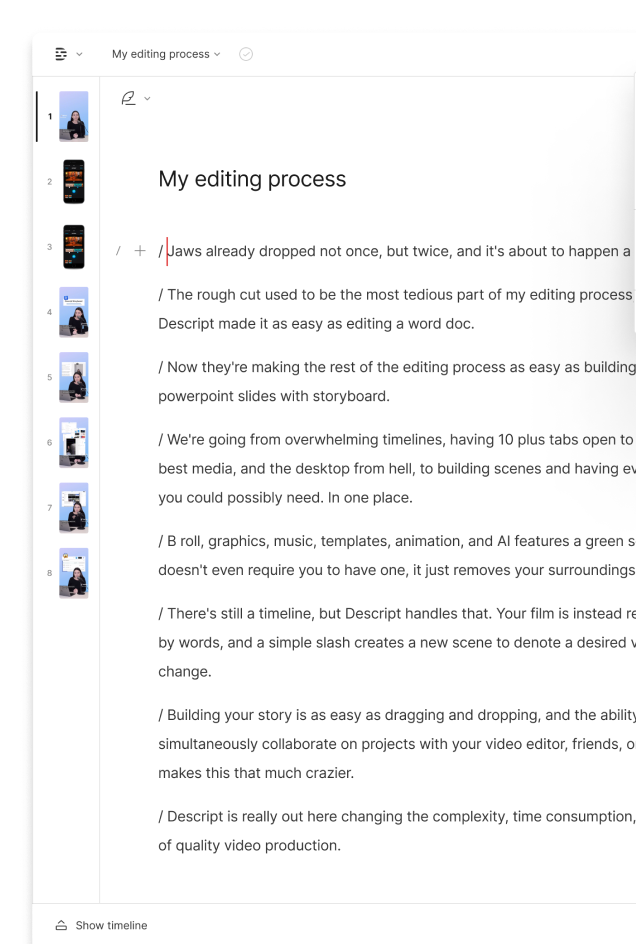What type of content do you primarily create?




A buzzy phrase you might have heard if you read any personal finance media is passive income. That’s the trick, everyone says — if you can find a good passive income stream, you can work less and make more money. And who doesn’t want that?
But what is passive income? Basically, it’s exactly what it sounds like: something you can set and forget, like the interest on your savings account, except way, way more lucrative.
To give you an example, in order to make some active income, you might teach a one-time, in-person class. But you could also turn that class into a source of passive income by recording the session and then allowing folks to download it at their convenience for a small fee.
To be clear, passive income is kind of a misnomer — you do have to do work at some point! It’s just that some things only generate income when they’re active, and some can continue to net you money even after that period. That’s where the passive part comes in. In this case, your class will be making you money long after the time you originally invested in preparing and teaching it.
Two Types of Passive Income
There are basically two types of passive income. One comes from investing — so those high-yield savings accounts, rental property or real estate, or buying into stocks or startups. Investing can be very lucrative, but it can also have high financial upfront costs that are out of reach for many people.
The other is creative passive income, which is what we’re talking about with the class example above. Creative passive income usually comes from selling ideas or art in some way — by creating evergreen online courses, for instance, or putting some of your work behind a paywall that audiences will have to pony up to access. You can also monetize your creative work so that the podcast or video series you’re already making makes you some extra money — more on how to do that below. Creative passive income usually requires a large upfront investment of time to get started, but not as much money as investment passive income.
Benefits of Passive Income
Creating passive income streams can be a side-hustle or a full-time job. (Or a side hustle that allows you to eventually quit your full-time job, if you’re lucky.) If you’re a freelancer whose income varies month to month, having regular passive income streams can help with cash flow, but even if you’re not, they can reduce stress by expanding your financial freedom. With passive income, you’re not tied to your job’s paycheck schedule or when your next raise is due, and unexpected expenses are easier to handle.
Having passive income can also allow you to finance your passion projects — buy a microphone to help start your podcast, or invest in the editing software that will help take your YouTube channel to the next level. Basically, when it comes to money, more is more — and when it comes to work, less is less, so passive income is the perfect solution.
Passive Income Ideas
So how can you make passive income as a creator? Here are some passive income strategies creators regularly rely on.
Monetize your podcast or YouTube channel
Many platforms have built-in monetization opportunities these days. If you enroll in YouTube’s partner program, for instance, they’ll run ads during your videos and pay you based on how many views those videos receive. TikTok also has a Creator Fund that helps users make extra cash just for posting their content. It may not be a lot at first, but your income will grow with your audience!
Affiliate marketing
If you regularly talk about products of any kind on your show, affiliate marketing might be for you. Let’s say you run a podcast where you review books each week. You can include an Amazon affiliate link in your shownotes, and every time a user clicks through and buys that book from your link, you get a portion of the sale price! This tactic is super-popular with bloggers, since they can include affiliate links directly in their text. By the way, Descript has an affiliate program of its own — you can check it out right here.
Start a Patreon
If you don’t want to do ads of any kind, Patreon may be more your speed. The platform allows your audience to subscribe to you, basically, by sending you a monthly or yearly fee in exchange for access to whatever it is you’re creating. Most creators with Patreons have different tiers available, so some fans can send a dollar or two a month out of the goodness of their hearts, while those who pledge more get access to rarified behind-the-scenes content, extras, or sometimes even Discord or Zoom chats with the creators they’re backing.
Create an online course
We’re always going online to learn how to do things — you’re here reading this article, aren’t you? If you create evergreen educational content, people can download and learn from it at their own speed. Even if you’re not a teacher by trade, think about what you know how to do that others might benefit from. You could do a session on how to start a podcast with just an iPhone, or offer tips for freelancers on how to organize their receipts so end-of-year finances are a breeze. If you’re a whiz at platform building, teach people social media best practices! The possibilities are endless!
Sell digital products
This might be a self-published book, or some of your photographs or illustrations. Digital products include everything from recipes to apps to printables — something the customer can print at home, like a calendar or planner. Keeping it digital means you never have to worry about where to keep your inventory, figuring out shipping rates, or making a zillion post office runs.
In conclusion
Whatever you decide to do, remember that passive income is never completely effort-free. You’ll have to invest time upfront to create something that audiences will be interested in, and then find a way to get the word out so they know where to find you. Building a brand and a fanbase can take a long time. But if you monetize along the way, you’ll be ready to reap the rewards when people do interact with your content. Make the effort now — your bank account will thank you later.






























%20(1).JPG)

.jpg)




